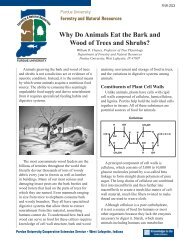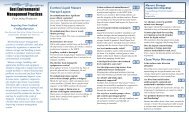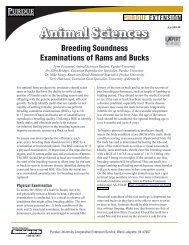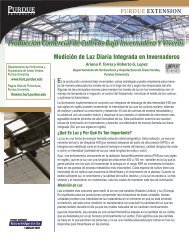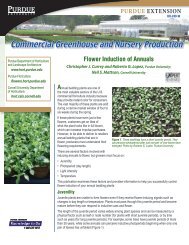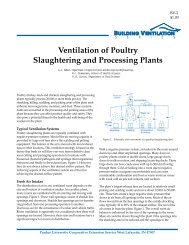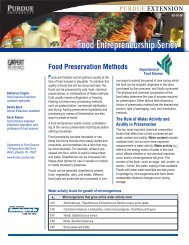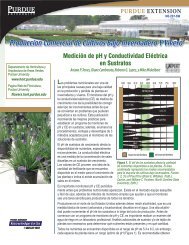lLamaS & aLPaCaS - Purdue Extension - Purdue University
lLamaS & aLPaCaS - Purdue Extension - Purdue University
lLamaS & aLPaCaS - Purdue Extension - Purdue University
You also want an ePaper? Increase the reach of your titles
YUMPU automatically turns print PDFs into web optimized ePapers that Google loves.
The “Lama” curriculum is designed to help youth develop both project and life skills.Activity/<br />
project skills are specific to the subject matter of lamas, such as learning how to care for your<br />
lama. Life skills relate to the process a member undergoes when doing an activity. Life skills, such<br />
as making decisions or mastering technology, are useful long after the member has completed the<br />
project.<br />
Project skills<br />
The Lama curriculum is designed to help youth develop project skills in five major areas:<br />
• Know Your Lama — History, Background, and Characteristics<br />
• Anatomy — Structure/Conformation, Fiber, and Parts<br />
• Health, Maintenance, and Facilities<br />
• Training and Showing<br />
• Use, Marketing, and Careers<br />
Life skills<br />
Developing Activity/Project and Life Skills<br />
The youth development skills used in this curriculum are part of the Four-Fold Youth Development<br />
Model.The model encompasses 47 skills that help youth build character; connect to the world<br />
around them; and develop into confident, caring, and contributing adults (Barkman, et al. 1999).<br />
Skills are grouped into the four H’s in the clover: Head, Heart, Hands, and Health. Below is a listing<br />
of the skills targeted in the three levels of the “Lama” curriculum.<br />
HEAD HEART HANDS HEALTH<br />
• Processing<br />
• Communicating • Mastering • Being<br />
information<br />
• Interacting<br />
technology responsible<br />
• Understanding<br />
socially<br />
• Exercising • Developing<br />
systems<br />
• Cooperating<br />
leadership self esteem<br />
• Managing resources<br />
• Practicing creativity<br />
• Managing<br />
yourself<br />
• Completing a<br />
project/task<br />
• Making decisions<br />
• Solving problems<br />
• Reasoning<br />
• Thinking critically<br />
• Keeping records<br />
• Planning &<br />
organizing<br />
• Achieving goals<br />
• Sharing<br />
• Motivating<br />
yourself<br />
©1999 Barkman, et al. Four-Fold Youth Development Model, 4-H Youth Development, <strong>Purdue</strong> <strong>University</strong>.All rights reserved.<br />
8<br />
NOTE:A list of targeted life<br />
skills and project skills for<br />
each activity by curriculum<br />
level is summarized on pages<br />
10 - 15



